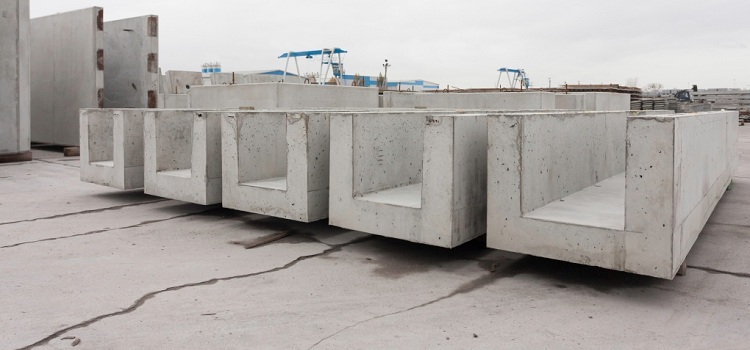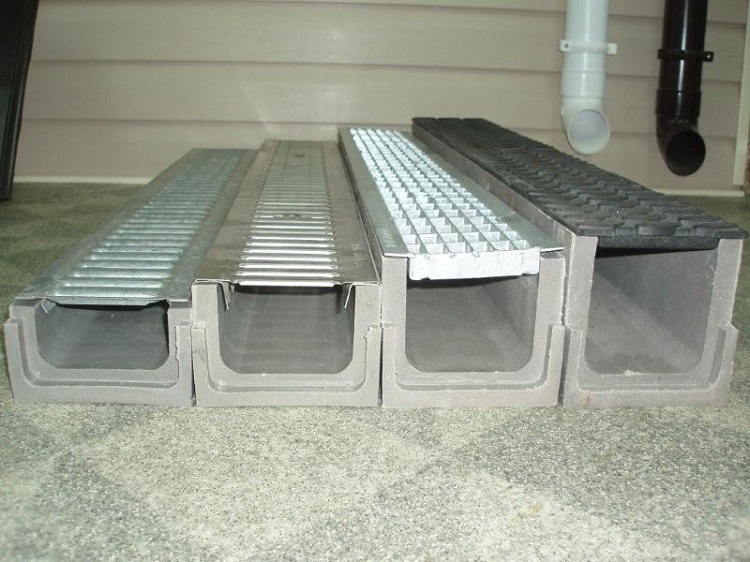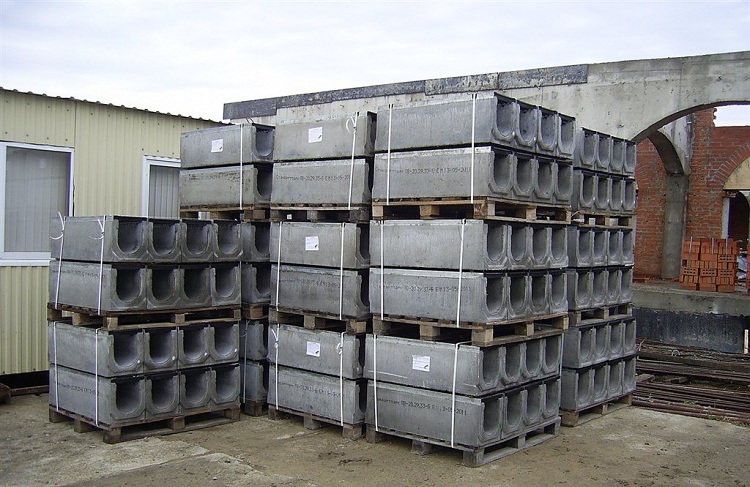Trays of heating mains are building elements that are made of reinforced concrete and perform a number of very important functions. The main purpose of these structural elements is the installation of a protective structure for the pipeline. In addition, reinforced concrete trays (concrete reinforced concrete or reinforced concrete) are used for installation of other channels: plumbing, cable, as well as for shower drains and drainage systems.
Content
What are trays for heating mains? What functions do they perform?
Reinforced concrete construction tray for heating main is a special element of reinforced concrete used for laying channels for various purposes. To organize heating mains use trays that perform a number of important functions:
- the main function of JBL is protective. These elements protect the pipeline not only from mechanical influences, but also protect it from all sorts of rodents that can cause harm to the pipes;
- and it is also worth noting that JBL does not allow heat to dissipate into the environment. Based on this, we can say that they save heat;
Note! Installation of such trays is allowed even in seismically active areas. They provide pipe protection even in unusual conditions.
- such channels protect communication from groundwater and floods;
- the capsule from the JBL protects the pipes from the effects of aggressive chemical compounds that are present in the soil.
Heating systems provide for covering with concrete covers. Thanks to this, in the event of an accident, work to eliminate it is very quick and easy.

Pipes laid in trays are not affected by groundwater, aggressive soil components, mechanical and other factors
Operational field of concrete products
All reinforced concrete trays are divided into 3 main groups depending on the purpose:
- Reinforced concrete trays of heating mains. They play the role of protective channels and restrict the pipeline transporting hot water or steam from contact with groundwater, as well as active chemical compounds located in the soil. Thus, the heat conduit is protected from the harmful effects of corrosion.
- ZhBL for installation of drainage channels. Such elements are used when laying drainage, collector and sewer structures. They are widely used in the construction of residential buildings, in the arrangement of parks, as well as in the laying of drainage channels of roads and railways.
- JBL for cable wiring. They play the role of a protective casing, protecting the power cable from the effects of the soil.
Detailed classification by purpose
Consider a more detailed classification of reinforced concrete trays, depending on their purpose:
ZhBL for the organization of heating mains. Such trays are mounted to protect the heat pipes of hot water and steam and perform a protective function. Protection of heat pipelines is a very important measure, since the occurrence of emergency situations during their operation entails unpleasant consequences.And repair work in the winter can be very difficult due to freezing of the soil.
Concrete reinforced concrete for highways. They are used to organize canals that provide water drainage from the roadway, pedestrian sidewalks, etc. The entrances to such drainage are covered with a grate. Such a grid is necessary in order to provide a more presentable appearance, and also plays the role of a coarse filter - it does not allow large objects (for example, branches) to get into the system.
Railway reinforced concrete. They are divided into two main groups:
- interdigital;
- interstitial.
Used to organize the drainage system of the railway track. As in the previous case, they are closed by a lattice.
JBL for the organization of drainage systems for storm sewers. Such trays are necessary for organizing water drainage from the foundations of various buildings, as well as from park areas. And also widely used in the installation of storm sewers.
JBL for water drainage. Typically, such trays are used to drain fluid from household fields. These elements collect water for irrigation.
Rain trays. The gutters are small in size, performing the function of removal and concentration of precipitation.
Cable. Used in the organization of protective covers for cable wiring.
The advantages of using reinforced concrete trays for laying heating mains
Previously, brick-built ducts were used for the installation of pipelines. However, brickwork did not have such advantages as reinforced concrete trays. It was distinguished by a short operational life and the complexity of restoration, so more reliable material was needed.
To date, reinforced concrete trays are used for different purposes and do an excellent job of their tasks. If we compare the concrete reinforced concrete with brickwork, the former differ in such advantages:
- strength characteristics and bearing capacity of these products are much higher, therefore they are allowed to be laid in seismically active areas;
- laying of tray elements is faster than organizing brickwork;
- in addition, it is worth noting that the price of a reinforced concrete tray is more affordable than the cost of a brick;
Note! It is worth noting that the use of JBL affects the convenience of repair work on the pipeline. To do this, you need to determine the localization of the breakdown and dig up the earth in the right place, after which, all that remains is to remove the cover of the concrete rod and proceed to repair the communication.
- the convenience of replacing a damaged section of a reinforced concrete channel is also an indisputable advantage of these products;
- At the production stage, reinforced concrete are subjected to a number of procedures that allow the trays to be resistant to aggressive environments;
- Another important advantage of such a channel is the high sealing performance between the individual trays in a single design. This property allows you to protect the heat pipe from groundwater.
And it is also worth noting that JBLs have excellent resistance to both low and high temperatures. Installation of reinforced concrete trays can be carried out open and closed without fear that the material of the trays will deteriorate due to temperature changes.
Specifications
All the necessary size tables for reinforced concrete trays for heating mains can be found in the documentation that governs these products, namely GOST. In addition, it is worth familiarizing yourself with the main technical characteristics of these building elements.

Trays are produced in accordance with GOST; high requirements are imposed on their quality and appearance
GOST 13015.0–83 includes a number of rules and regulations that apply to reinforced concrete trays for heating mains. Consider the main ones:
- frost resistance;
- water resistance;
- high strength concrete;
- all the necessary standards for the size and shape of these building products are provided;
- tables are given;
- norms and requirements are put forward not only for the finished product, but also for the production process.
In addition, the necessary indicators are described that the auxiliary fittings for these building products must meet.
Consider the requirements that are put forward in relation to concrete:
- concrete grade must comply with the strength and quality indicators described in GOST. The use of the mark is not lower than M300;
- there is another very important indicator - compressive strength. This indicator should not be lower than 70%;
- the particle size of the filler for the material should not exceed 15 mm;
- It is strictly forbidden to use various active additives in the production of reinforced concrete trays.
The dimensions of the concrete beam for laying heating mains are presented in table No. 1.
Table 1
| Title | Sizes, mm | Weight, kg |
| L-20-15 / 2 | 2970x2160x1040 | — |
| L-16-8 / 2 | 2970х1840х1030 | 3150 |
| L-15-8 / 2 | 2970x1840x720 | 2750 |
| L-14-8 / 2 | 2970x1840x570 | 2500 |
| L-13-8 / 2 | 2970х1480х1320 | 3230 |
| L-12-8 / 2 | 2970х1480х1010 | 2400 |
| L-10-8 / 2 | 2970х1480х550 | 1650 |
| L-8-8 / 2 | 2970x1160x1000 | 1950 |
| L-6-8 / 2 | 2970x1160x530 | 1140 |
| L-4-8 / 2 | 2970x780x530 | 900 |
| L-3-8 / 2 | 2970x780x380 | 750 |
In addition, GOST also regulates related fittings. The requirements put forward to her must be strictly observed. A very important factor when choosing reinforcement for reinforced concrete is the selection of the necessary steel grade.
Helpful information! All trays are marked with the letter “L”. After this letter comes all the basic technical and production data, as well as a stamp confirming that this product has passed the quality check.
It is also worth noting that the labeling of reinforced concrete trays contains the following information:
- brand of reinforced concrete product;
- the company that manufactured the tray;
- date of manufacture;
- overall dimensions of the building element;
- tray weight;
- product strength;
- a stamp that indicates that the tray has passed the technical inspection procedure.
The selection of reinforced concrete trays for heating mains is carried out, as a rule, according to the above data. If the product meets the specifications required by GOST, then there is no doubt in its effectiveness and that it will last a long operational period.
Types of trays by shape
GOST regulates not only the technical characteristics of reinforced concrete trays, but also their shape. The shape of this building element depends primarily on its purpose, and only then on the features of use. There are three main forms in which these products are manufactured:
- square or rectangular;
- trapezoidal;
- semicircular.
Reinforced concrete construction trays of a square or rectangular shape are used, as a rule, with the closed laying of communications, differing in purpose. From these trays a protective, sealed channel is mounted, inside which a pipeline is laid. Consider what communications are mounted in such reinforced concrete building elements:
- heating mains;
- water pipes;
- power cables.
Separate trays are mounted end-to-end. And also it is worth noting that the joints are necessarily coated with a special cement mortar. For these purposes, a solution of grade M-50 and higher is required. After the solution dries up, another measure is performed - waterproofing the reinforced concrete channel. Waterproofing material is selected depending on the specific case.
Trapezoidal models are used, as a rule, when installing roads. Of these products, a drainage system and storm sewer are equipped. Installation itself occurs by sequentially inserting trays into the grooves.Thus, an oblique channel is obtained. Slope is a necessary factor for effective natural water diversion. The method of assembling such a channel is called “telescopic”, which reflects the sequence of reinforced concrete segments nested in each other. The entry point of the shower is covered with a grill.
Semicircular reinforced concrete trays are also used for drainage in drainage and storm systems. Due to their more presentable appearance, they are laid near residential buildings and in park areas.
Channel laying methods
Laying reinforced concrete construction trays is carried out by different methods. The installation method is determined taking into account various factors:
- channel assignment;
- technical characteristics of trays;
- features of the terrain within which construction work is carried out.
Consider the main options for the organization of reinforced concrete channels:
- KL. This option provides for the organization of channels on which special floors are based.
- KLp. With this installation, channels are made made of covers and supported concrete elements.
- CLS Such channels are made from trays. Reinforced concrete building elements rely on each other, and for additional reliability they are joined together by special devices - channels.
Important! When arranging a canal of reinforced concrete, the necessary point is the creation of a “cushion” of sand. This allows you to increase the density of the docking tray with the soil surface and give the strength of the structure as a whole.
Reinforced concrete channel laying includes many procedures. For example, turning the trays through special hooks that are usually inserted into the side holes. Such hooks can be made without any effort from ordinary steel reinforcement with your own hands.
Joints, as mentioned above, must be sealed with cement mortar. However, it is worth noting that on unstable (floating) soil, it is recommended to use more plastic waterproofing materials. For such purposes, a waterproofing agent based on bitumen is perfect.
In addition, the finished canal must be covered with earth at the same time from two sides. This is necessary in order to eliminate distortions due to uneven load on the structure.











